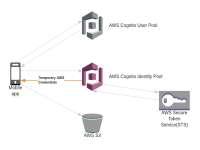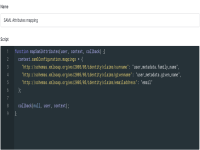How this Blog Works
Nov 15, 2020

Photo by Matt Hudson on Unsplash
I find myself scratching my head everytime I need to explain the inner workings of my blog. It is not because it is special or complex. For me, it is because the automation does not need me to remember the details - it just works. The automation is not unique. I suspect it would be common. I am just writing it down so that I don't have to stare at my source code and try and remember how everything is hooked up.
Markup over WYSIWYG
I have always been more comfortable with markup languages or schemas over WYSIWYG editors when the content has code or Math. For markup languages, a simple editor such as the forever trustworthy vim or more recently Microsoft Visual Studio Code, is my choice.
Websites for Static Content
When a website needs to show static content, using a general purpose language to store and extract the content from a database seems somewhat of an overkill. An alternate strategy would be to serve the static assets, and it is adequate for most purposes. However, it is no fun editing a collection of HTML files. I worry about tags and angle brackets which distracts me from the writing. This is where a markup scheme such as Markdown comes in. A processor can convert Markdown text to HTML very fast. This also has the nice effect of separating content from the engine that converts and renders the content.
Components to the rescue
Using a different markup schema does not solve the problem of editing a collection of files. The front end programming community seems to have come full circle with content rendering. It started out on the server as pages, went to the browser as components, and then went back to the server as components. Modern front end frameworks such as React, Angular and Vue support rendering (or building) pages on the server from components; this is called Server Side Rendering (SSR). This is where Gatsby comes to the picture - it is a site generator using React. Gatsby pulls in all the configuration for SSR to work out of the box. It also has a host of plugins to cut down on development time.
One more thing...
We have the content in Markdown, and a site generator with Gatsby. We need a way to query for the content, and plug it in the components. This is where GraphQL comes in. GraphQL lets me query the content to build ordered lists, extract tags and more.
Oh, one more thing!
We need something to serve the site. A Content Delivery Network (CDN) is meant to do exactly that. An added benefit is CDNs are edge optimized which is a fancy way of saying that the content is replicated to multiple geographies, so that a reader receives the content from their nearest node (server), and not the server your cousin set up in New Delhi in her basement. The other benefit is redudancy, which means in case of a node failure, another node (or it's backing source) will take over to serve the content, unlike your cousin's set up where server failure would make your site unavailable. While there are many CDNs to choose from, I chose Netlify because they also provided the simplest (and for me sufficient) way to build and publish my site. They also take care of my domain, but that's another thing.
Continuous Deployment
The site and the content is in version control on GitLab. Netlify has an amazing integration with GitLab that just works. Netlify acts a build server that builds the site whenever a branch is pushed or merged with the production branch. In addition, it deploys the site when a branch is merged with the production branch. It also sends notifications back to GitLab when the build operation starts, succeeds or fails. This has the nice effect that GitLab is able to perform clean up operations such as automatically deleting the merged branch on remote, once the build succeeds in Netlify.
Future Improvements
All this works pretty well for me. One improvement I would like to make from an Architecture point of view is to separate the content and site generator into two different repositories. This would promote a cleaner separation of concerns, though at the moment I can't fathom any benefit from such a separation, which is why I will not embark on it.
Related Posts
Authentication and Authorization with AWS - API Gateway
Dec 29 2021
AWS Cognito User Pools and Federated Identities can be used to authorize API gateway requests.
Authentication and Authorization with AWS - About IAM
Sep 12 2021
Amazon Web Services (AWS) references a dizzying number of concepts, resources, patterns, and best practices to provide a fully managed…
Authentication and Authorization with AWS - Federated Access
Nov 21 2021
AWS Cognito Identity Pools provide authenticated users access to AWS resources.
Message Delivery Guarantees with ActiveMQ
Aug 17 2019
Apache ActiveMQ is a mature messaging middleware.
How Headless CMS work
Jun 25 2023
Headless CMSs came about because it is hard to build a single platform that content writers like using and software developers like…
Flux-CD Pattern for AWS CDK8s Services
Jul 9 2023
AWS Cloud Development Kit for Kubernetes called generates Kubernetes manifest files for Kubernetes () deployments and services.
JAM Stack
Nov 29 2020
In a previous post on how this blog works, I referred to Gatsby and GraphQL.
Technical Decisions that you'll Regret Later
Jan 28 2024
Software development Teams make many decisions while building systems.
Lessons from Service Oriented Architecture (SOA)
May 23 2021
SOA invokes mixed feelings amongst Software Architects and Developers. It began with a promise but ended up confusing people.
The First Post
Apr 20 2019
Just like fashion, technology tends to go in circles, and static web sites are rising in popularity for content.
Authentication and Authorization with AWS - Cognito Sign-up and Sign-in
Oct 17 2021
Amazon Web Services (AWS) provides Cognito to delegate authentication and authorization out of applications completely.
Authentication and Authorization with AWS - Cognito SAML Integration
Nov 14 2021
AWS Cognito integrates with a corporate identity provider such as Active Directory (AD) using SAML.











